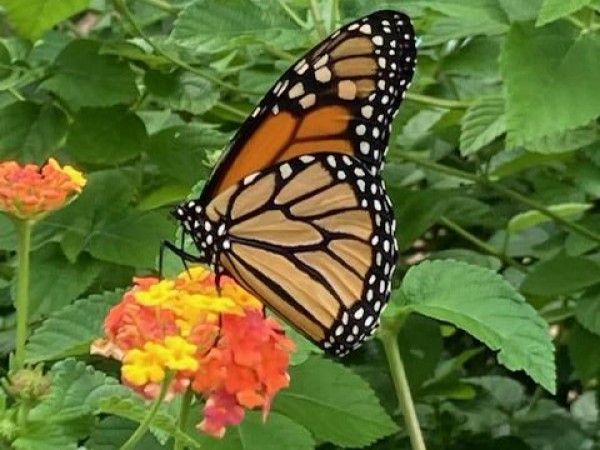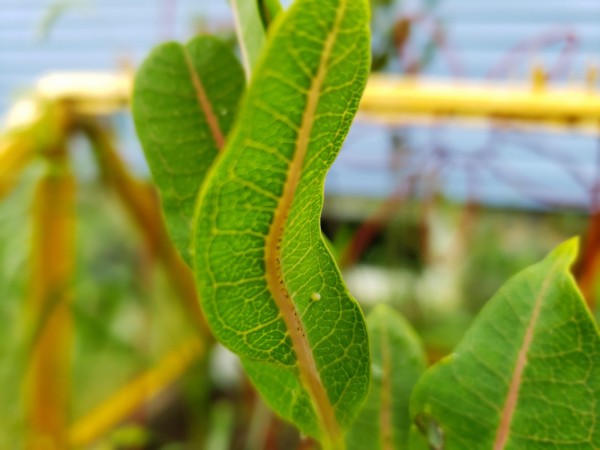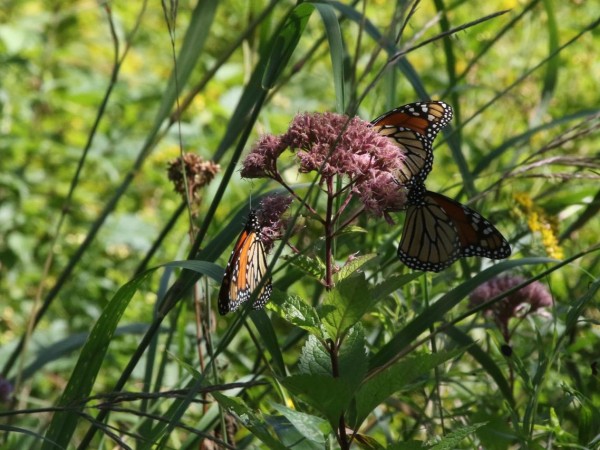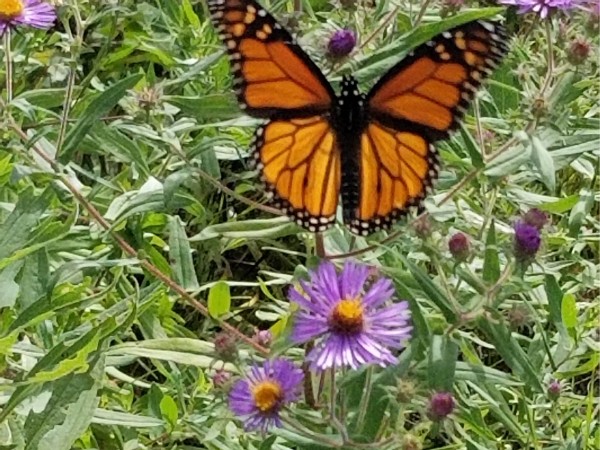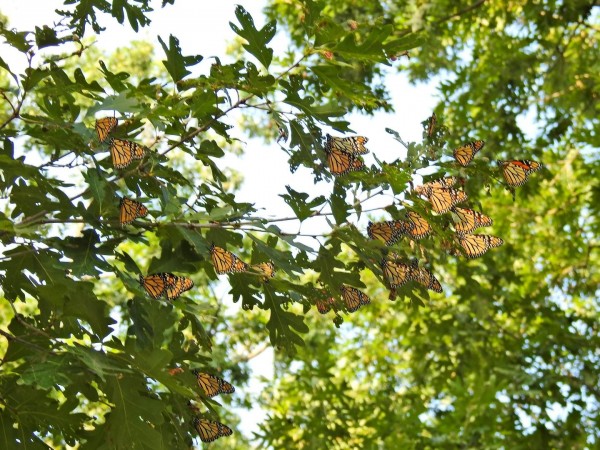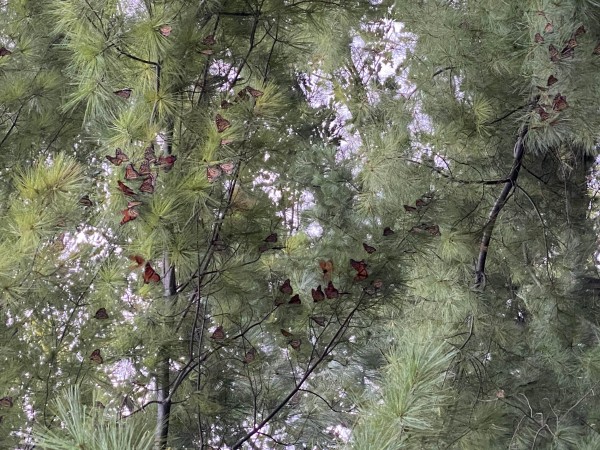Eastern Monarch Fall 2021 Report #1
Published: 09/08/2021
Fueling Up and Heading South
Monarchs are on the move — flying, nectaring, and roosting. They are busy building fat reserves by drinking nectar along their migration pathways. These migration pathways occur in large urban centers such Toronto, Detroit, Chicago, Kansas City, and Atlanta as well as the mountains of Maryland, Virginia, and West Virginia, the fields and prairies of southern Minnesota, Iowa, Kansas, and Nebraska, and along the coastlines of the Great Lakes, the Atlantic, and Gulf of Mexico. Migration momentum is building.
Mike in Lenexa, KS: "The monarchs were feeding intently on both butterfly bushes so much they were allowing me to get relatively close to take pics, there is one just resting on the milkweed. We have plenty of blooming sources and water moisture in the soil. The weather forecast appears to be calm and sunny all week. Peak migration should be around September 17-29 for the area I live. Based on the Journey North maps it appears migration and overnight roosting is starting to arrive in northern Iowa so this suggest our normal timelines is aligning again this year." (09/04/2021)
Sally in Atlanta, GA: "Monarch went to lots of lantana flowers. Stayed in garden area over 30 minutes." (09/06/2021)
Eggs and Larvae
Reports of monarch eggs and larvae are still coming from as far north as New England and the Upper Midwest and are increasing in the southern U.S.
Sherry in Winchester, MA: "Eggs on prairie milkweed on west side of house." (09/05/2021)
Erich in Apex, NC: "Observed 66 monarch larvae feeding on both front and back gardens, Waystation #35670. One adult male monarch patrolling the front garden. Some 5th instar have left the Milkweed plants. Time to start searching for chrysalis." (09/07/2021)
Melissa in Flat Rock, MI: "Last [5th] instar caterpillars in Flat Rock, MI on swamp milkweed." (09/08/2021)
Peak Migration
Peak migration reports are picking up. Southern Ontario and the Upper Midwest and Great Lakes are still hotspots, and activity is increasing along the Eastern Flyway in New England.
Rick in Stonington, CT: "Counted 51 while sitting for 30 minutes on east-facing bench on Avalonia Land Conservancy's Knox Preserve. Some stopped to feed as shown in photo, but most kept flying westward and trying to avoid large dragonflies." (09/04/2021)
Kathryn in Chicago, IL: "Observed at least 30 monarchs flying in to land in the rainbow beach prairie to feast on goldenrod and sunflowers. All flew in from the north or north east. A lot of mudding and puddling along the sand. After, they continued on south." (09/05/2021)
Amy in Clarington, ON: "Went on our annual monarch count family walk at Samuel Wilmot Nature Area. Counted 97 monarchs on our walk." (09/06/2021)
Fall Roosts
Over forty new monarch roosts were observed by Journey North volunteers since last week's update on September 1. Check out the Monarch Fall Roost map to see the location of these roosts. As mentioned before, roosts are challenging to study and we still have much to learn about them. That’s why it's so important to submit your monarch roost reports to Journey North. Roosts show us where large concentrations of migrating monarchs are found and reveal the main migration pathways to Mexico.
Darlene in Leamington, ON: "At Seacliff Park, North end of park numerous already established clusters in maple & oak trees on NE shady sides of trees. Largest cluster about 35. All appeared pristine. A mix of males & females. More continued to arrive from the north. Coldfront arriving this afternoon." (09/07/2021)
Sherri in Oak Harbor, OH: "There were well over 100 monarchs. They have been roosting in our trees each evening since Thursday Sept 2, 2021. Each night a couple hundred roost before flying away in the morning. Then more come in as the day continues." (09/07/2021)
Mark and Sue in Arlington, WI: "Monarch roost count at 7:15 p.m. by Mark and Susan Foote-Martin at W7503 Kampen Road, Arlington, WI 53911. Clear, winds northwest at 5 mph, and 75 degrees. Monarchs were roosting on the windbreak north of the cabin. 10 were on the south side of the spruce about 30 feet from the west spruce and 120 were on the east side of the one and only white pine and adjacent spruce to the north." (09/07/2021)


